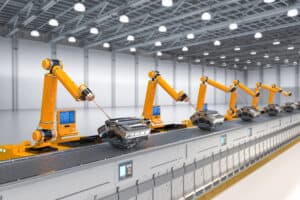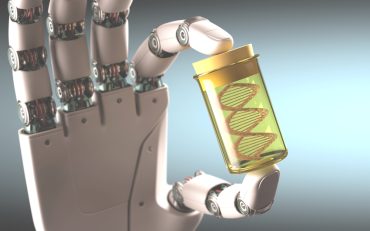
Similar to what has happened with autonomous vehicles, lights-out factories are close, but more still needs to be done.
The “lights-out,” completely autonomous factory has been an enticing concept for years. But even with advanced technology now available for AI-based decision-making, robotics, and edge sensors, the completely automated factory of the future is a long way off.
Most executives don’t see their companies reaching that state anytime soon, a recent survey out of the National Association of Manufacturers finds. Only about 7% say they have digitized their factory operations extensively, and 15% expect to reach this point by 2026. In addition, only about half, 49%, expect fully or partially autonomous factories in the future.
Ultimately, a completely automated factory is not financially feasible, says Peter Zornio, senior VP and chief technology officer for Emerson. “A completely automated factory won’t be worth it financially,” he says. I recently had the opportunity to sit down with Zornio in New York, who, as an early pioneer of AI and automation in industrial controls, explained the limits of such technologies.
See also: The 2024 State of Automation: Are Leaders Ready to Ditch Legacy Thinking?
“There’s an enormous level of sensors and software that you need to take care of for every possible situation,” he says. “That’s not worth the investment, versus having people still at a facility that are still there to flexibly respond to a situation that your super-duper-advanced AI plant operation system had never encountered before.”
In addition, in a completely automated operation, “when something goes wrong, such as a piece of equipment needing to be worked on, we don’t have robots that are talented enough to be able to go out there and do everything, to fix every piece of equipment that’s in the pipe — such as knowing how to change the diaphragm in a control valve, balance a pump, and so on.”
Think about self-driving cars, which have been boosted with endless AI hype, Zornio continues. “Do we have self-driving cars yet? Six years ago, it was two years away. Isn’t it still two years away? So the same thing is true for the lights-out or autonomous factory. We’ve been hearing about it since way back in the mid-1980s when I started building automation systems.”
At the same time, automation, and now AI, has made great strides in plant productivity, he states. “A typical manufacturing plant, with all the automation that’s been done over the last 20 or 30 years. produces much more stuff with about half the people it needed 40 years ago.”
Along with operational concerns, another looming challenge with moving to automated manufacturing is data, spread across different databases in different formats, he adds.
The need to rationalize and make data available to automated and AI systems is bringing operational technology and information teams closer together. “And there’s historically been, let’s just say, not a lot of love between the two organizations, ” Zornio quips. “The people in operations have their own systems built to run facilities 24/7 x 365. Whereas IT pros may want to shut the servers down between 2 a.m. and 4 a.m., thinking nobody needs them at those times.”
The challenge now “is to design an architecture enabled to pull data to pull more seamlessly from the OT world into the IT world and back,” he urges. “Especially if we talk about using AI systems that may be in the cloud. It will be OpenAI or other language-based AI models that we’ll need to interface to.”





























